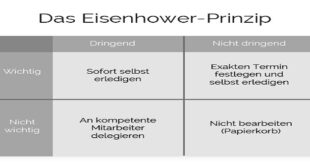In today’s highly competitive job market, attracting, retaining, and motivating top talent is a paramount concern for organizations across the globe. While several factors contribute to an employee’s decision to join or stay with a company, compensation and benefits packages play a pivotal role. In this comprehensive article, we will delve into the intricacies of compensation and benefits, exploring their importance, components, and strategies for optimizing them to create a satisfied, engaged, and productive workforce.
Understanding Compensation and Benefits
Compensation and benefits, often referred to as “total rewards,” encompass all the financial and non-financial rewards that employees receive in exchange for their work. These packages are designed to meet various employee needs, including financial security, personal and professional development, work-life balance, and job satisfaction.
Components of Compensation and Benefits
- Base Salary: The core of an employee’s compensation, base salary is the fixed amount paid on a regular schedule, such as monthly or bi-weekly. It typically reflects the employee’s job responsibilities, experience, and market conditions.
- Variable Pay: Also known as performance-based pay, variable pay includes bonuses, commissions, and incentives tied to individual or team achievements. It motivates employees to excel and aligns their goals with organizational objectives.
- Benefits: Employee benefits encompass a wide range of offerings, including health insurance, dental and vision coverage, retirement plans (e.g., 401(k)), paid time off (PTO), and parental leave. These perks enhance an employee’s overall well-being and job satisfaction.
- Equity-Based Compensation: Stock options, restricted stock units (RSUs), and employee stock purchase plans (ESPPs) are forms of equity-based compensation. They give employees a stake in the company’s success, aligning their interests with shareholders’.
- Non-Monetary Rewards: Non-monetary rewards, such as recognition programs, flexible work arrangements, and professional development opportunities, contribute to an employee’s sense of fulfillment and engagement.
Importance of Compensation and Benefits by INS Global
- Attraction: Competitive compensation and benefits packages help attract top talent, making an organization more appealing to prospective employees.
- Retention: Once hired, employees are more likely to stay with a company that offers competitive compensation and benefits. High retention rates reduce turnover costs and foster a stable workforce.
- Motivation and Engagement: Well-designed rewards can motivate employees to perform at their best and become more engaged in their roles. This leads to increased productivity and job satisfaction.
- Employee Well-being: Benefits like health insurance and retirement plans provide financial security and peace of mind to employees, enhancing their overall well-being.
Strategies for Optimizing Compensation and Benefits with INS Global Consulting
- Market Research: Regularly conduct market research to ensure your compensation packages remain competitive. Benchmark against industry standards and adjust as needed to attract and retain talent.
- Total Rewards Communication: Clearly communicate the full scope of your compensation and benefits offerings to employees. This fosters transparency and helps them understand the value of their rewards.
- Customization: Recognize that not all employees have the same needs and preferences. Offer flexibility in benefits packages, allowing employees to tailor their rewards to their individual circumstances.
- Performance Management: Link variable pay components to measurable performance metrics. Performance-based bonuses and incentives should be attainable, challenging, and clearly tied to organizational goals.
- Employee Development: Invest in professional development and training programs. Offering opportunities for skill enhancement and career growth can be a powerful non-monetary reward.
- Employee Recognition: Implement recognition programs to acknowledge and reward outstanding performance. Peer recognition and awards can boost morale and motivation.
- Work-Life Balance: Encourage work-life balance through flexible scheduling, remote work options, and generous PTO policies. A healthy work-life balance contributes to employee satisfaction and retention.
Conclusion
In the contemporary business landscape, compensation and benefits are integral components of talent management strategies. Organizations that prioritize competitive and well-rounded total rewards packages are better positioned to attract, retain, and motivate top talent. By understanding the components of compensation and benefits, recognizing their importance, and implementing effective strategies, companies can create a thriving workforce that drives organizational success.
 Wiki Techno Bestes Tech-News-Magazin-Portal
Wiki Techno Bestes Tech-News-Magazin-Portal

